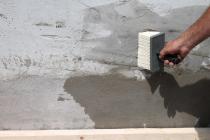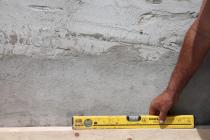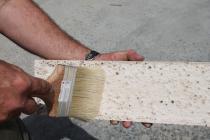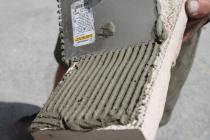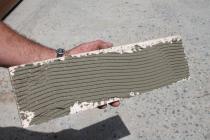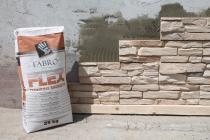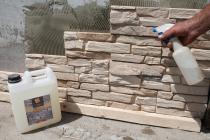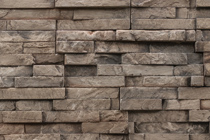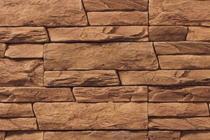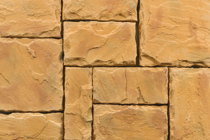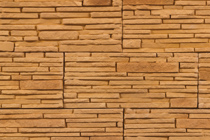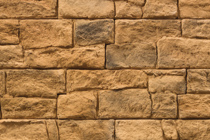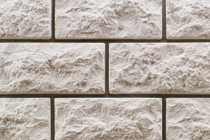The gluing process
Make sure to use a spirit leveler before applying the first row of veneers. If you're working on the whole outer wall of a building it's a good idea to draw some guiding lines before you start gluing. Make sure your lines are properly lined up at the edges the walls.
Please calculate the needed number of veneer slabs before starting. The back side of the slabs should be cleaned with sandpaper or a rough haired brush.
The gluing process should always be started from the bottom, using veneers from multiple boxes to ensure a more rustic feel. Please make sure to inspect all slabs before applying them, cutting them to the correct size beforehand.
Venneers should only be applied to properly leveled, dry and clean surfaces, using Fabro Flex, or a similar flexible or plaster glue. The glue should be applied to the back side of the veneers, superfluous glue removed with an appropriate trowel.
Varying veneer sizes and shades give the walls a more natural look.
Proper adhesion is only ensured if the environmental temperature doesn't drop below 5 ºC or exceed 20 ºC in the 48 hours following the gluing procedure.
Special instructions for brick-style veneers and other venneers requiring pointing
Pointing should be done no less than 7 days after the gluing process. All surfaces should be properly dry and clean. Please follow the instructions found on the packaging of the pointing material.
The following instructions are applicable if you're using a Fabrostone brand or a similar, sand and cement based pointing material:
Prepare the pointing material in 2 kg portions to prevent cement efflorescence. The material remains usable for 30 minutes if you're working in autumn on a calm day, or 15-20 minutes in other seasons. The pointing material should have a wet sand-like consistency.
Dilation gaps, salt efflorescence, complaints
The manufacturer doesn't accept responsibility for improper application by the contractor, or claims based on the sizes or colors of the veneers once they've been applied.
Make sure to create appropriate dilation gaps while working. Some veneers may sometimes produce salt efflorescence if they aren't treated with the proper varnish. Make sure to start the varnishing process in a hidden spot to test the coloring effect it may have on the veneers.
In some rare cases applying a varnish won't completely prevent the formation of salt efflorescence, but these growths should dissappear on their own in 2-3 years time.




